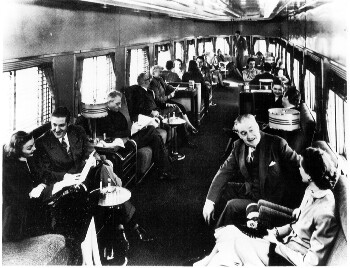
Railroads began weaving their way through Iowa's landscape in the late 1840s, marking the start of a rail transportation revolution. By 1860, the state was crisscrossed with 655 miles of track, a number that exploded to 2,683 miles just a decade later. As the century turned, nearly 9,200 miles of track connected Iowa's communities, reaching a peak between 1911 and 1917 with over 10,500 miles of railway.
While a few small railroads bustled around Iowa’s river towns, it was the Mississippi and Missouri Railroad that truly made history. In 1856, it became the first to span the mighty Mississippi River, a feat that would later see it reborn as the Chicago, Rock Island and Pacific Railroad—better known simply as the Rock Island. However, the Rock Island's journey hit a rough patch, culminating in bankruptcy in 1975 and a court-ordered liquidation in 1980.
Yet, the legacy of the Rock Island lives on. Much of its Iowa track was picked up by the Chicago and North Western Railway Co., and the main line that once connected Chicago to Davenport, Council Bluffs, and Omaha is now operated by the Iowa Interstate Railroad—a nod to the enduring spirit of rail travel in the heartland.
Rail Lines in Iowa

In 1867, the Iowa Division of the Chicago and North Western Railway—originally the Chicago, Iowa, and Nebraska Railroad—made history by becoming the first railroad to lay tracks across the entire state of Iowa. This monumental achievement linked Chicago directly to the Union Pacific's transcontinental railroad in Omaha, bridging a crucial gap in America's expanding rail network. Fast forward to April 1995, when the Chicago and North Western Railway officially merged with the Union Pacific Railroad, further solidifying this historic connection.
In 1878, both the Chicago, Burlington and Quincy Railroad (now BNSF Railway) and the Illinois Central Railroad (later known as the Illinois Central Gulf Railroad) completed their rail lines across Iowa. In December 1985, the Illinois Central Gulf Railroad sold all its Iowa tracks to the Chicago, Central and Pacific Railroad but regained them in January 1996 by acquiring that same company. In 1988, it changed its name back to the Illinois Central Railroad.
Meanwhile, in 1874, the Milwaukee and Mississippi Railroad rebranded itself as the Chicago, Milwaukee, St. Paul and Pacific Railroad, and by 1878, it had joined the ranks of railroads stretching their tracks across Iowa. However, the journey wasn't without its challenges. By late 1976, the company faced bankruptcy, leading to a split between its "operating core" and "non-operating core." In early 1986, the operating core found new life under the Soo Line Railroad, part of the CP Rail system (formerly Canadian Pacific).
Rail Changes in Iowa
Iowa's rail system has been on quite a journey since 1975, marked by dramatic changes and reshuffling, largely due to railroad bankruptcies and line abandonments. By December 31, 2001, the state had permanently bid farewell to about 6,595 miles of track, a stark contrast to the golden years of 1911 to 1917. Of these, a significant 3,800 miles vanished after 1974, a direct result of the mid-1970s bankruptcies of two major players: the Chicago, Rock Island and Pacific Railroad, and the Chicago, Milwaukee, St. Paul and Pacific Railroad. These losses left Iowa with just 3,905 miles of track in operation today—a far cry from its peak.
Fast forward to 2012, and Iowa's rail landscape is served by five Class I railroads: BNSF Railway Co., CN, Canadian Pacific Railway, Norfolk & Southern Railway, and Union Pacific Railroad. These are joined by one Class II railroad, the Iowa Interstate Railroad, and 11 Class III railroads, including the Appanoose County Community Railroad, the Boone & Scenic Valley Railroad, and the Cedar Rapids and Iowa City Railway, among others.
These railroads connect Iowa to five key gateways or interchange points in the Midwest: Chicago, Minneapolis-St. Paul, Omaha, Kansas City, and St. Louis. Through these crucial hubs, Iowa's rail system continues to play a vital role in the region's transportation network.
Genealogy Links
The Iowa Department of Transportation's Historic Archives Digital Collections is a searchable compilation of transportation-related photos, maps, and other documents gathered by DOT employees or donated to the department, including many rail-related photos.